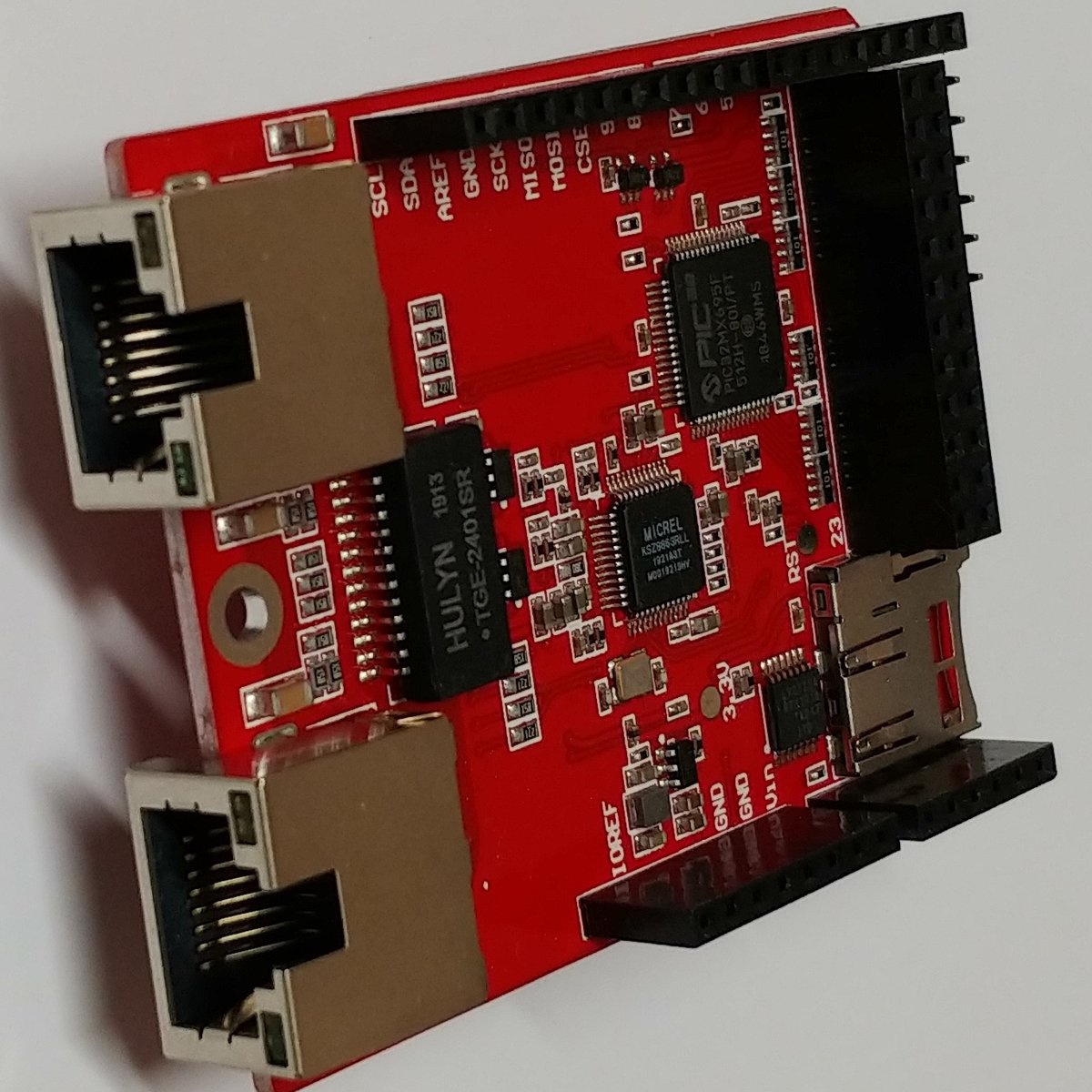Introduction
Online gaming has become a popular form of entertainment, attracting millions of players from around the world. Whether it’s intense first-person shooters or immersive multiplayer role-playing games, online gaming relies heavily on smooth and efficient communication between players and game servers. One crucial factor in ensuring uninterrupted gameplay is the choice of communication protocol. While there are several protocols available, like TCP (Transmission Control Protocol), UDP (User Datagram Protocol) stands out as the preferred option for online gaming.
UDP is a lightweight, connectionless protocol that offers several advantages in terms of speed, efficiency, and low latency. In contrast to TCP, UDP doesn’t guarantee reliable delivery of data. Instead, it focuses on delivering data packets quickly and efficiently. This architecture makes UDP ideal for real-time applications like online gaming, where speed and responsiveness are crucial.
In this article, we will delve deeper into the world of UDP and explore why it is the go-to choice for online gaming. We will explore the inner workings of UDP, highlight its benefits, and uncover why it is the preferred protocol for this demanding industry.
What is UDP?
User Datagram Protocol (UDP) is a transport layer protocol that operates on the Internet Protocol (IP) network. It is a connectionless protocol, meaning it does not establish a dedicated connection between the sender and the receiver before transmitting data. Instead, UDP simply packages data into small units called datagrams and sends them to the destination address.
UDP is known for its simplicity and lightweight design. Unlike TCP, which requires an established connection and guarantees data delivery, UDP sends data packets without any acknowledgment or verification from the receiver. This lack of reliability might seem like a disadvantage, but it actually offers several benefits in certain scenarios, such as online gaming.
One key feature of UDP is its speed. Since UDP does not have the overhead of establishing and maintaining a connection, it can transmit data packets quickly. This is crucial in online gaming, where real-time communication between players and servers is necessary for a seamless gaming experience. The fast delivery of UDP packets ensures that the game actions and player inputs are instantly recognized and processed.
Another important characteristic of UDP is its simplicity, which leads to lower processing requirements and minimal resources consumption. This makes it ideal for situations where efficiency is a priority, such as online gaming. With UDP, game developers can optimize their networking code to focus solely on transmitting game-related data, enhancing performance and reducing latency.
Additionally, UDP allows for broadcasting and multicasting, which can be beneficial in online gaming environments. Broadcasting allows a single data packet to be sent to multiple recipients simultaneously, while multicasting enables efficient communication between a group of players within the same game session. These capabilities are particularly useful for multiplayer games, where the same game state needs to be shared among all participants.
In summary, UDP is a connectionless, lightweight protocol that enables fast and efficient data transmission. Its simplicity, speed, and support for broadcasting and multicasting make it highly suitable for online gaming, where real-time communication and low latency are critical factors for an immersive gaming experience. Understanding the underlying principles of UDP is essential for game developers and players alike, as it forms the foundation for seamless online gameplay.
How does UDP work?
User Datagram Protocol (UDP) operates on top of the Internet Protocol (IP) and provides a simple and efficient method for sending and receiving data packets. Unlike TCP, UDP does not establish a connection between the sender and the receiver before transmitting data. Instead, it follows a “fire and forget” approach.
When an application wants to send data using UDP, it first packages the data into small units called datagrams. Each datagram consists of a header containing the source and destination port numbers, and a payload that contains the actual data to be transmitted. The application then passes the datagram to the operating system’s network stack.
The network stack takes the datagram and encapsulates it into an IP packet, adding the necessary information such as the source and destination IP addresses. It then passes the packet to the network layer, which is responsible for routing the packet across the network to the intended recipient.
Upon receiving the UDP packet, the recipient’s network stack checks the destination port number in the header to determine which application should receive the data. It then strips off the IP header and passes the datagram to the corresponding application.
One crucial aspect of UDP is that it does not provide any mechanisms for error checking or ensuring reliable delivery of data. This means that the receiver does not send acknowledgments back to the sender, and there are no mechanisms for retransmitting lost or corrupted packets. While this may seem like a drawback, it actually contributes to UDP’s efficiency and low latency.
UDP operates in a best-effort manner, focusing on delivering data quickly rather than guaranteeing its arrival. This makes UDP suitable for applications where real-time communication is paramount, such as online gaming. By sacrificing reliability in favor of speed, UDP ensures that game actions and player inputs are transmitted with minimal delay, resulting in an immersive gaming experience.
In summary, UDP works by packaging data into datagrams, which are sent as UDP packets over IP. It does not establish a connection before transmitting data and does not provide reliability mechanisms. This simplicity and speed make UDP an ideal choice for applications like online gaming, where real-time communication and low latency are critical factors for success.
Why is UDP preferred for online gaming?
When it comes to online gaming, the choice of communication protocol plays a vital role in delivering a seamless and immersive gaming experience. While TCP is commonly used for many internet applications, UDP has emerged as the preferred protocol for online gaming. Here are several reasons why UDP is highly favored in this industry.
Faster communication with low latency: UDP is a lightweight protocol that offers faster communication compared to TCP. In online gaming, every millisecond counts, and even the slightest delay can result in a poor gaming experience. UDP’s minimal overhead and lack of reliability mechanisms make it a suitable choice for real-time applications where low latency is crucial.
Reduced packet loss: Online gaming environments can be unpredictable, with varying network conditions and potential packet loss. While TCP implements a retransmission mechanism to ensure reliable data delivery, this can introduce additional delays and lead to out-of-sync gameplay. UDP, on the other hand, does not have built-in retransmission, allowing the game to continue smoothly even if a few packets are lost. Game developers can implement their own error detection and correction mechanisms at the application level, tailored specifically for gaming needs.
Efficient for real-time gameplay: Online games require constant and real-time communication between players, game servers, and other gaming infrastructure. UDP’s connectionless nature and lightweight design make it well-suited for transmitting constant streams of small data packets, such as player movements, actions, and updates. This ensures that the gameplay remains responsive and interactive, without the overhead introduced by TCP’s connection establishment and flow control mechanisms.
Scalability and flexibility: UDP provides the flexibility to design highly scalable gaming architectures. With TCP, each connection requires stateful communication, resulting in higher memory and processing demands on the server. UDP, on the other hand, allows for stateless communication and enables game servers to handle a larger number of concurrent players without sacrificing performance. This scalability is especially important for massively multiplayer online games (MMOs), where thousands of players can be simultaneously connected.
Overall, UDP offers the speed, reduced packet loss, efficiency, and flexibility required for online gaming. While it may lack the reliability guarantees of TCP, game developers and network engineers can implement custom error detection and correction mechanisms to compensate for this. The advantages provided by UDP make it the preferred protocol for online gaming, ensuring smooth, responsive, and enjoyable gameplay for players around the world.
Faster communication with low latency
One of the primary reasons why UDP is preferred for online gaming is its ability to provide faster communication with low latency. In online gaming, every millisecond matters, and a delay in data transmission can significantly impact the player’s experience. UDP’s characteristics make it well-suited for real-time applications such as online gaming, where responsiveness and low latency are critical factors for success.
UDP’s lightweight design and connectionless nature contribute to its speed. Unlike TCP, which requires the establishment of a connection before data transmission, UDP does not have the overhead of connection setup and teardown. This allows UDP packets to be sent quickly, resulting in minimal delay. Furthermore, UDP does not implement flow control mechanisms, which can introduce additional latency. Instead, it prioritizes speed and efficiently delivers data packets as quickly as possible.
The lack of reliability mechanisms in UDP also plays a role in its low latency communication. While TCP ensures reliable delivery of data through retransmission and acknowledgment mechanisms, this can introduce delays in real-time applications like online gaming. With UDP, there is no need for acknowledgments or retransmissions, making it a faster option for transmitting data. This is particularly advantageous in gaming scenarios where real-time communication between players and servers is crucial for maintaining sync and responsiveness.
In addition, UDP’s data packaging and transmission process contribute to low latency communication. UDP datagrams are smaller and contain only essential information, resulting in smaller overhead compared to TCP packets. This means that less data needs to be transmitted, reducing the overall latency. Moreover, UDP does not have built-in congestion control mechanisms, allowing for a more direct and streamlined transmission. This helps to minimize delays caused by network congestion and ensures a smoother gaming experience.
By prioritizing speed and minimizing latency, UDP enables online gaming experiences that are more responsive and immersive. The rapid delivery of data packets ensures that player actions are recognized and processed in real-time, allowing for seamless gameplay. Whether it’s aiming and shooting in a first-person shooter or executing complex maneuvers in a multiplayer game, the low latency communication provided by UDP enhances the player’s ability to interact with the game world and other players, resulting in a more immersive gaming experience.
In summary, UDP’s lightweight design, connectionless nature, and lack of reliability mechanisms contribute to faster communication with low latency in online gaming. By prioritizing speed and minimizing delay, UDP ensures that player actions and interactions are instantly communicated to the game servers, enhancing responsiveness and providing a seamless and immersive gaming experience.
Reduced packet loss
Packet loss is a common issue in network communication, including online gaming. Loss of data packets can occur due to various reasons, such as network congestion, hardware failures, or unreliable connections. While packet loss can negatively impact the gaming experience, UDP offers advantages in reducing packet loss compared to other protocols like TCP.
One of the reasons UDP is preferred for online gaming is its lack of built-in retransmission and acknowledgment mechanisms. In TCP, if a packet is lost during transmission, the receiver requests retransmission from the sender. While this ensures reliable delivery, it introduces additional delays and can disrupt the real-time nature of gaming.
With UDP, there are no such mechanisms for retransmission or acknowledgment. When a packet is lost, UDP simply moves on to the next packet, without waiting for the lost packet to be resent. While this may seem like a disadvantage, it actually contributes to the reduced packet loss in online gaming. By not waiting for lost packets, UDP ensures that the game continues smoothly, without interruptions that can impact the player experience.
Game developers can implement their own error detection and correction mechanisms on top of UDP to compensate for packet loss. For example, they can use sequence numbers or checksums to detect and discard corrupted or out-of-order packets. By handling error detection at the application level, game developers have more control over how packet loss is managed in their specific game scenario.
Furthermore, UDP’s stateless nature allows for additional strategies to minimize packet loss. For example, game developers can implement techniques like interpolation or prediction to mitigate the impact of occasional lost packets. These techniques analyze the trajectory of player movements and actions and make educated guesses about the missing data. By smoothly transitioning between received packets and the estimated missing data, the impact of packet loss can be reduced, ensuring a more seamless gaming experience for the players.
While packet loss cannot be completely eliminated, UDP’s flexibility and the ability to implement custom error detection and correction mechanisms make it a preferred choice for online gaming. By providing the control to handle packet loss at the application level, game developers can design strategies tailored specifically for their game’s needs, resulting in reduced packet loss and a smoother gameplay experience.
In summary, UDP’s lack of inbuilt retransmission and acknowledgment mechanisms, along with its stateless nature, contributes to the reduced packet loss in online gaming. By allowing game developers to implement their own error detection and correction strategies, UDP empowers them to mitigate the impact of packet loss and provide a more seamless gaming experience for players.
Efficient for real-time gameplay
Real-time gameplay requires seamless and instant communication between players and game servers, making efficiency a crucial factor. UDP stands out as the preferred protocol for online gaming due to its efficiency in handling real-time gameplay scenarios without compromising responsiveness or performance.
First and foremost, UDP’s connectionless nature makes it well-suited for real-time applications. Unlike TCP, which requires the establishment of a connection before data transmission, UDP allows for immediate packet transmission without the overhead of connection setup. This eliminates any latency introduced by the initial handshake and enables instant communication between players and servers, essential for delivering a smooth gaming experience.
Furthermore, UDP’s lightweight design ensures efficient processing and minimal resource consumption. TCP involves additional processing overhead due to its reliability mechanisms such as sequence numbers, acknowledgments, and flow control. UDP, on the other hand, focuses on transmitting data packets quickly and efficiently, without the additional complexity of managing reliable delivery. This streamlined approach makes UDP more efficient for handling constant streams of small data packets, as required in real-time gaming.
The absence of flow control in UDP provides added efficiency for real-time gameplay. TCP employs flow control mechanisms to regulate data transmission based on the receiver’s capacity to receive and process data. While necessary for ensuring reliable delivery, flow control can introduce delays and impact real-time communication. With UDP, there is no inherent flow control, allowing game data to be transmitted at the maximum available rate. This ensures that the latest game state updates and player actions are delivered as quickly as possible, enhancing the responsiveness and fluidity of the gameplay.
Moreover, UDP’s simplicity and efficient transmission make it ideal for time-sensitive operations like multiplayer interactions. For example, player movements, aiming, firing, and other actions must be communicated instantaneously to ensure that gameplay interactions feel natural and synchronized across all players. UDP’s low latency and fast delivery of data packets enable the real-time transmission of these actions, providing a seamless and immersive gaming experience.
In summary, UDP’s connectionless nature, lightweight design, and absence of flow control mechanisms make it highly efficient for real-time gameplay in online gaming. The ability to establish immediate communication, coupled with minimal overhead and maximum data transmission rates, allows for seamless interactions and instant feedback. These factors contribute to UDP’s widespread adoption as the preferred protocol for delivering efficient real-time gameplay experiences.
Scalability and flexibility
Scalability and flexibility are critical considerations in the design and implementation of online gaming architectures. UDP offers advantages in both these areas, making it a preferred protocol for delivering highly scalable and dynamically adaptable gaming experiences.
One key aspect of UDP that enhances scalability is its stateless nature. Unlike TCP, which requires maintaining a connection state between the sender and the receiver, UDP does not have any inherent connection management overhead. This allows game servers to handle a larger number of concurrent players without being burdened by excessive memory or processing demands. In massively multiplayer online games (MMOs), where thousands of players can be simultaneously connected, UDP’s scalability ensures that the game servers can efficiently manage the influx of data, resulting in a smoother and more enjoyable gaming experience for all players.
Additionally, UDP’s lack of inbuilt congestion control mechanisms contributes to its flexibility in handling varying network conditions. TCP actively monitors network congestion and adjusts its transmission rate to prevent overloading the network. While this is necessary for reliable data delivery, it can lead to delays in real-time scenarios like online gaming. UDP, on the other hand, does not impose any such restrictions and allows game data to be transmitted freely and without interference. This enables game developers to adopt customized congestion control mechanisms tailored specifically to their game’s requirements, resulting in optimized performance and responsiveness.
Another factor that adds to UDP’s flexibility is its support for broadcasting and multicasting. Broadcasting involves sending a single data packet to multiple recipients simultaneously, while multicasting enables efficient communication within a defined group of players. These features are particularly useful in online gaming environments where the same game state needs to be shared among all participants or specific subsets of players. UDP’s ability to efficiently transmit data to multiple recipients allows for dynamic and flexible gameplay scenarios, enhancing the overall gaming experience.
Moreover, UDP’s lightweight design makes it highly adaptable to different gaming architectures and technologies. It can be easily integrated with other protocols and technologies, such as IPsec for secure communication, IPv6 for future-proofing, or VPN for connecting players across different networks. This adaptability enables game developers to leverage UDP’s efficiency and speed while incorporating other necessary features and technologies to meet the specific needs of their game.
In summary, UDP’s stateless nature, lack of congestion control mechanisms, support for broadcasting and multicasting, and adaptability contribute to its scalability and flexibility in online gaming. These characteristics allow game servers to handle a larger number of concurrent players and adapt to varying network conditions without sacrificing performance. The ability to customize congestion control and integrate with other protocols further enhances UDP’s flexibility, enabling game developers to create immersive and dynamic gaming experiences.
Conclusion
In the world of online gaming, UDP (User Datagram Protocol) has emerged as the preferred protocol for delivering seamless and immersive gaming experiences. Its benefits in terms of faster communication with low latency, reduced packet loss, efficiency for real-time gameplay, scalability, and flexibility make it an ideal choice for the demanding requirements of online gaming environments.
UDP’s lightweight and connectionless nature allow for faster communication compared to protocols like TCP. With minimal overhead and no requirement for connection establishment, UDP enables instant transmission of data packets, ensuring low latency and responsive gameplay. This speed is crucial for real-time applications such as online gaming, where even the slightest delay can disrupt the immersive experience.
Packet loss can be problematic in network communication, but UDP’s lack of built-in retransmission and acknowledgment mechanisms actually contributes to reduced packet loss in online gaming. By not waiting for lost packets, UDP avoids introducing unnecessary delays and ensures uninterrupted gameplay. Game developers can implement their own error detection and correction mechanisms to compensate for occasional packet loss, resulting in smoother gameplay.
Efficiency is a key factor in online gaming, and UDP excels in this regard. Its streamlined transmission and lack of flow control mechanisms minimize processing requirements and resource consumption. This efficiency allows game developers to prioritize real-time gameplay interactions without the additional complexity introduced by TCP. UDP’s simplicity also enhances scalability, enabling game servers to handle a larger number of concurrent players without compromising performance.
The flexibility offered by UDP is another significant advantage, making it adaptable to different gaming architectures and allowing for customized solutions. Its support for broadcasting and multicasting facilitates dynamic and efficient communication among players, enhancing multiplayer interactions. Additionally, UDP’s compatibility with other protocols and technologies enables developers to incorporate necessary features such as security or network connectivity, ensuring a seamless gaming experience.
In conclusion, UDP’s ability to provide faster communication with low latency, reduced packet loss, efficiency for real-time gameplay, scalability, and flexibility make it the preferred protocol for online gaming. Its characteristics align with the requirements of real-time interactions, delivering seamless and immersive experiences to players around the world. As the world of online gaming continues to evolve, UDP remains a reliable and efficient choice for game developers and players alike.

























